And I don’t mean The Beatles. I’m talking about four incredible British Women I spent time with on my recent travels in Shropshire.
I will be writing this in my new British accent, a mash up of Dame Edna and Julia Child. It isn’t how these women sound at all, but its the only accent I can muster, and I find myself talking this way every time I recount stories about my trip.
So off we go!
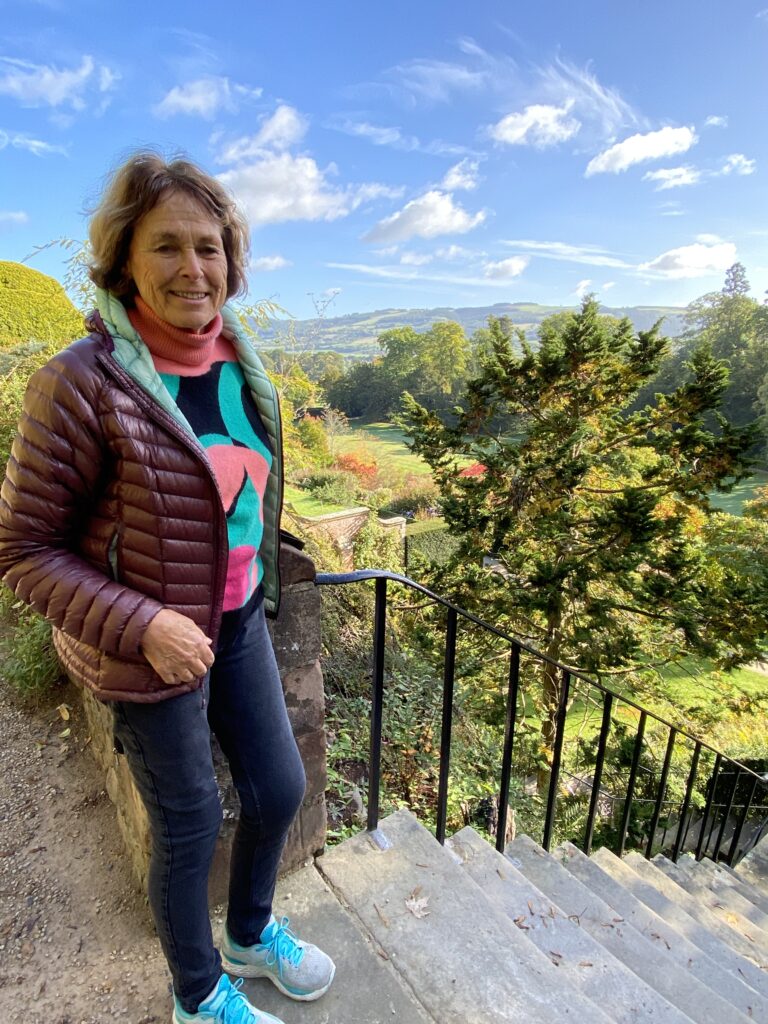
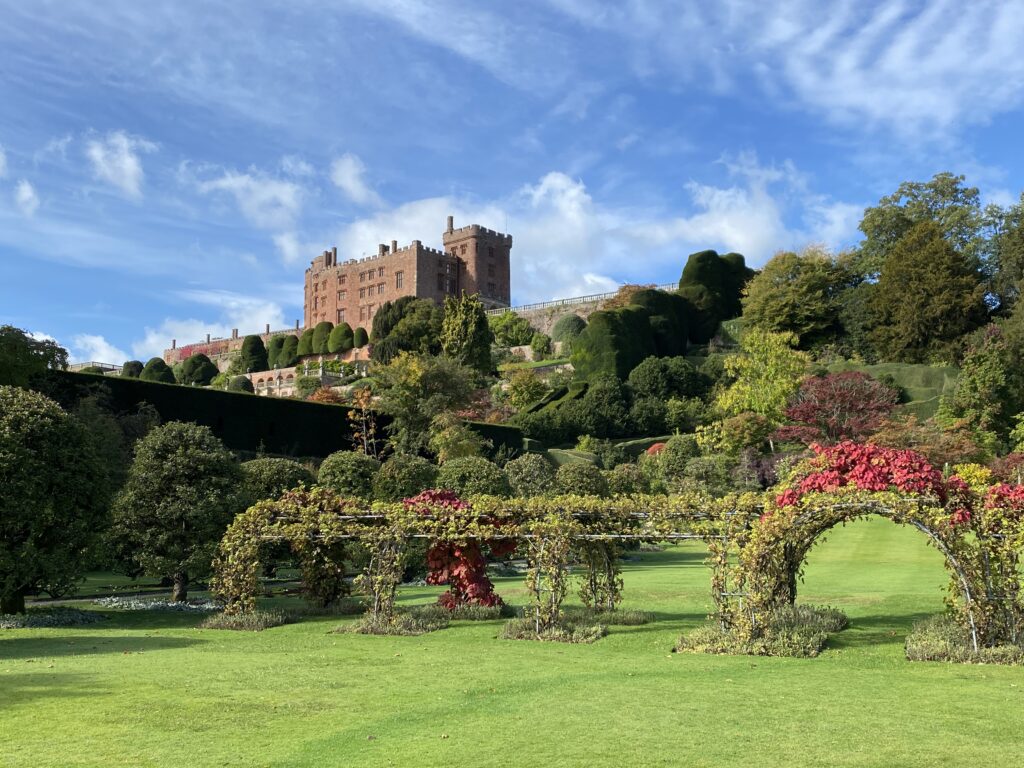
First, of course, is Andria, my host, guide, chef and friend. She has led an amazing life, growing up in England, renovating a barn in France, skiing the Swiss alps, becoming a chef, opening a restaurant in Dallas, raising her family, becoming a Master Gardener, and finally starting her company, The Curious Traveler. Last year, she moved back to England permanently and has settled into her entirely charming cottage in Much Wenlock, the hub from which the spokes of our adventures originated. She would demur, but I would say she’s an expert on the castles, churches and gardens in Shropshire, having taken many tours through the area and beyond to the rest of England, Scotland, Ireland and Wales.
After a day of squiring me through the ruins of an ancient monastery, the fading beauty of a garden in fall, or the rich tapestries of a Welsh castle, she would cook a simply delicious meal of sausages, lamb or duck.
Tireless and brilliant, Andria made my trip to England so memorable, it’s hard for me to convey in mere words.
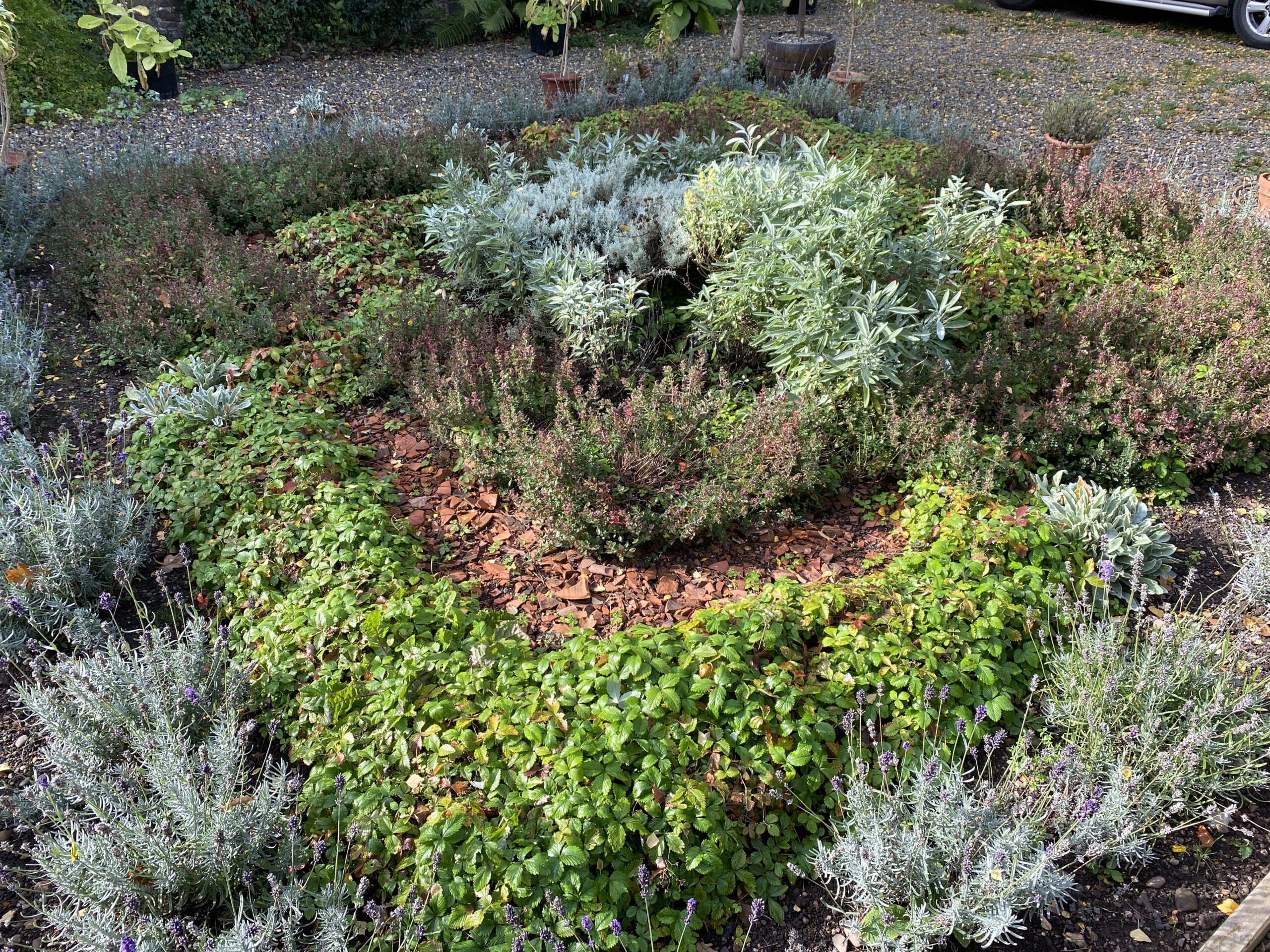
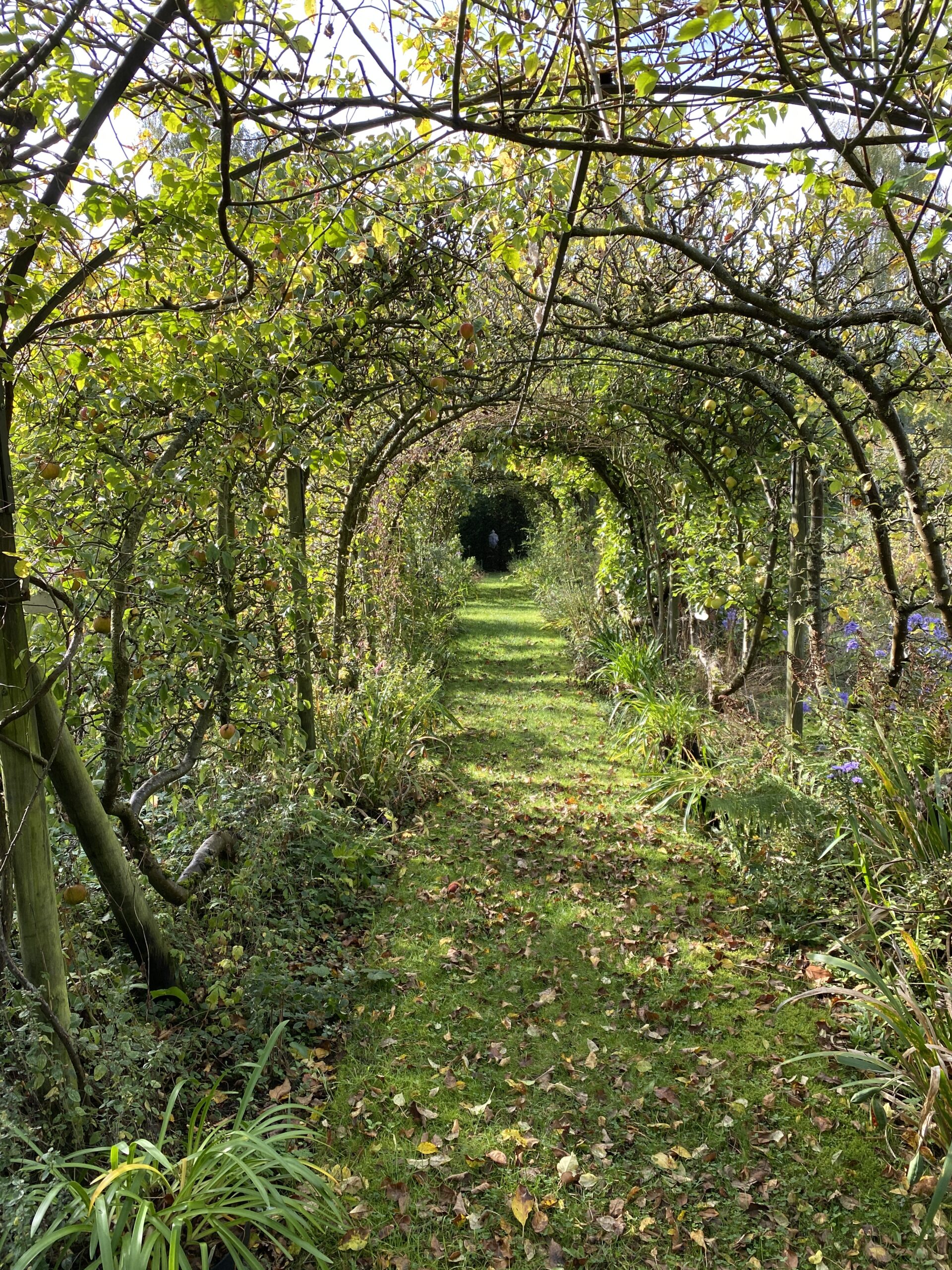
And speaking of words, I want to introduce you to Katherine, who lives in the Dower House at Morville House, near Bridgnorth. A dower house is where the mother of the current lord of the manor would live following her husband’s death. Think “dowager.” Although not a dowager, Katherine has been the lady of the Dower House for 30 years. A PhD with a vast background in libraries and gardens, she took the empty field in front of the Dower House and transformed it over the years into a series of themed gardens, each reflecting an era in British history (the Victorian Rose Border, The Tudor Knot,) a style of planting (Canal and Cloister,) or a concentration of certain plants or trees (the Nuttery, the Orchard, the Apple Tunnel.) Each with a personality, an attitude, a beauty evident year-round, even in the cold and damp of an October day.
Andria gave me, and Katherine signed, a copy of Katherine’s acclaimed book about the making of the garden, The Morville Hours. I have begun reading it, slowly, so I can savor the deliciously rich language, the complicated sentence structure, the unfamiliar terms for plant and flower. Not unlike the beauty and complexity of her garden, Katherine’s writing is overwhelming and often I close the book with tears in my eyes, so stunning is the language.
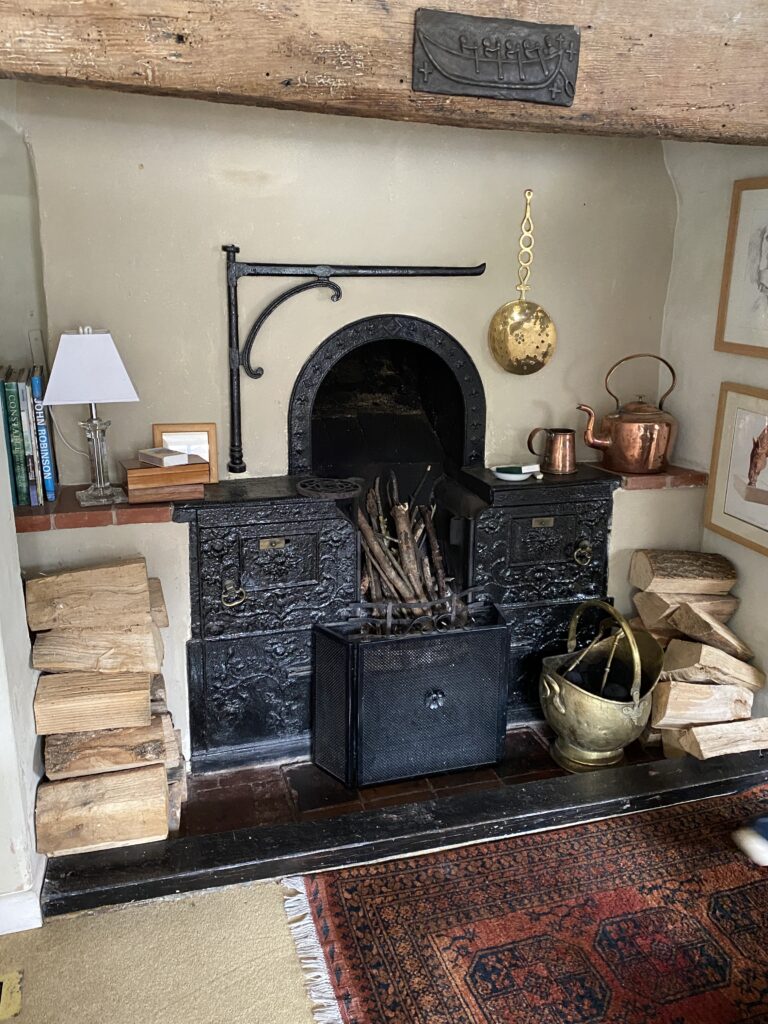
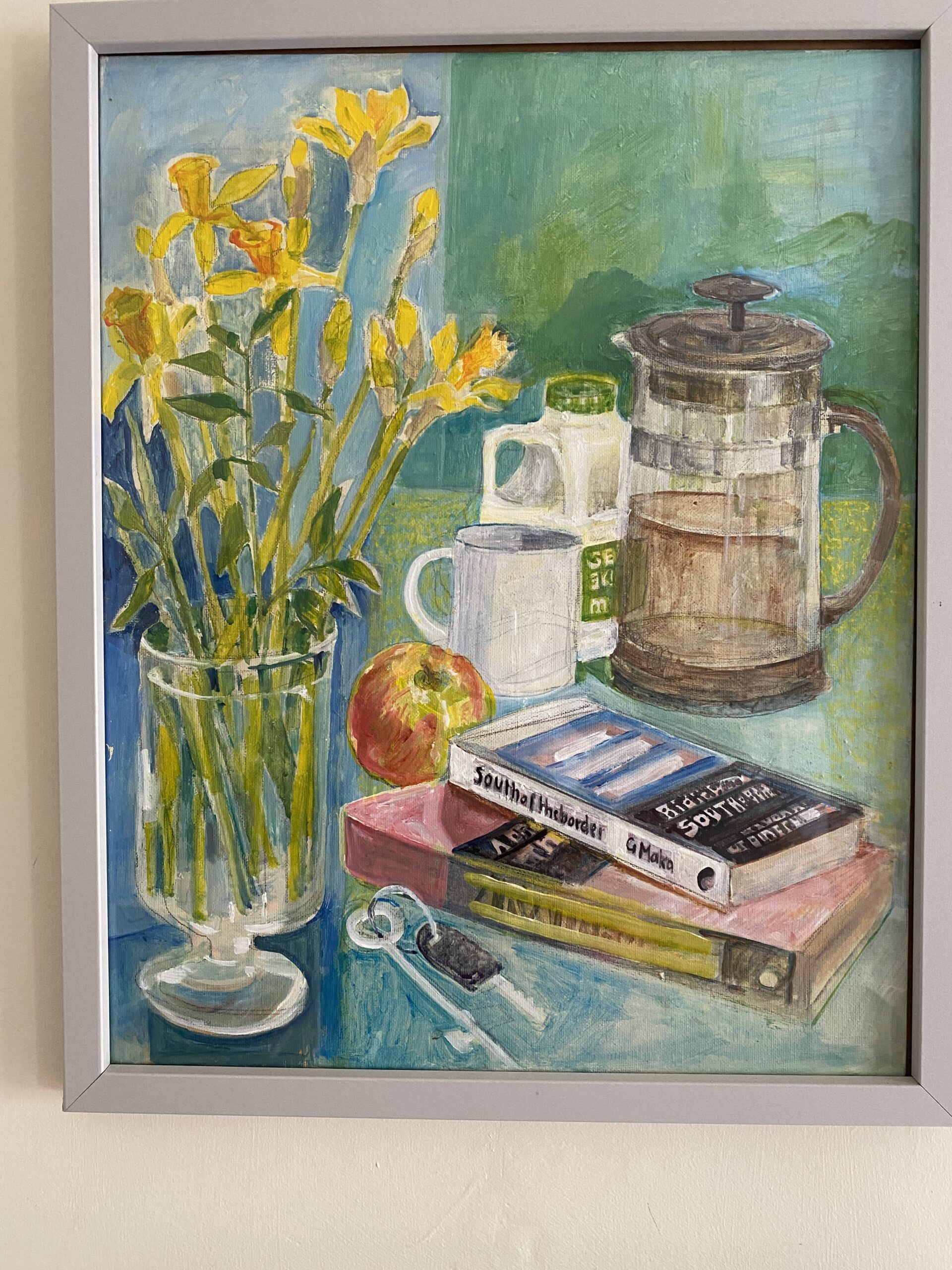
And then, because Andria apparently knows only interesting, accomplished women, I met Mickie. Older, gregarious, a widow with a big, rambling family, who lives in an unusual (to me) stone house in Much Wenlock. She invited us for coffee (which turned into tea,) and I enjoyed a tour of her lovely home, reconfigured over the years and quintessentially British. Three stories, with a huge old fireplace, exposed rafters, narrow stairs, the odd closet, nooks and crannies created over time and chock-a-block full of memories and her own artwork.
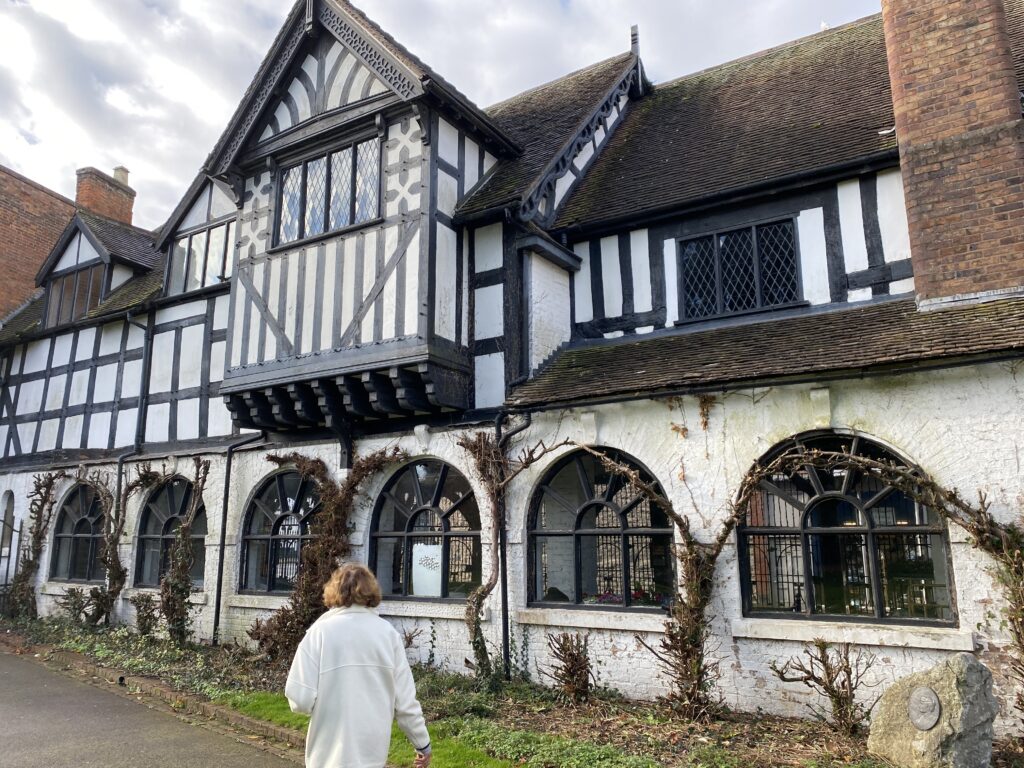
Mickie is a gifted artist, having been at it for years, but recently challenging herself to paint a picture a day during COVID lockdown. Each one is different, a tiny slice of ordinary life–here a teapot, there a flower vase–passing the time, capturing a moment.
And finally, there is Phoebe, Andria’s neighbor, whose beau Richard guided me through the Much Wenlock Guildhall, right, little changed since the 1500s when it was built and served as the courthouse until 1986.
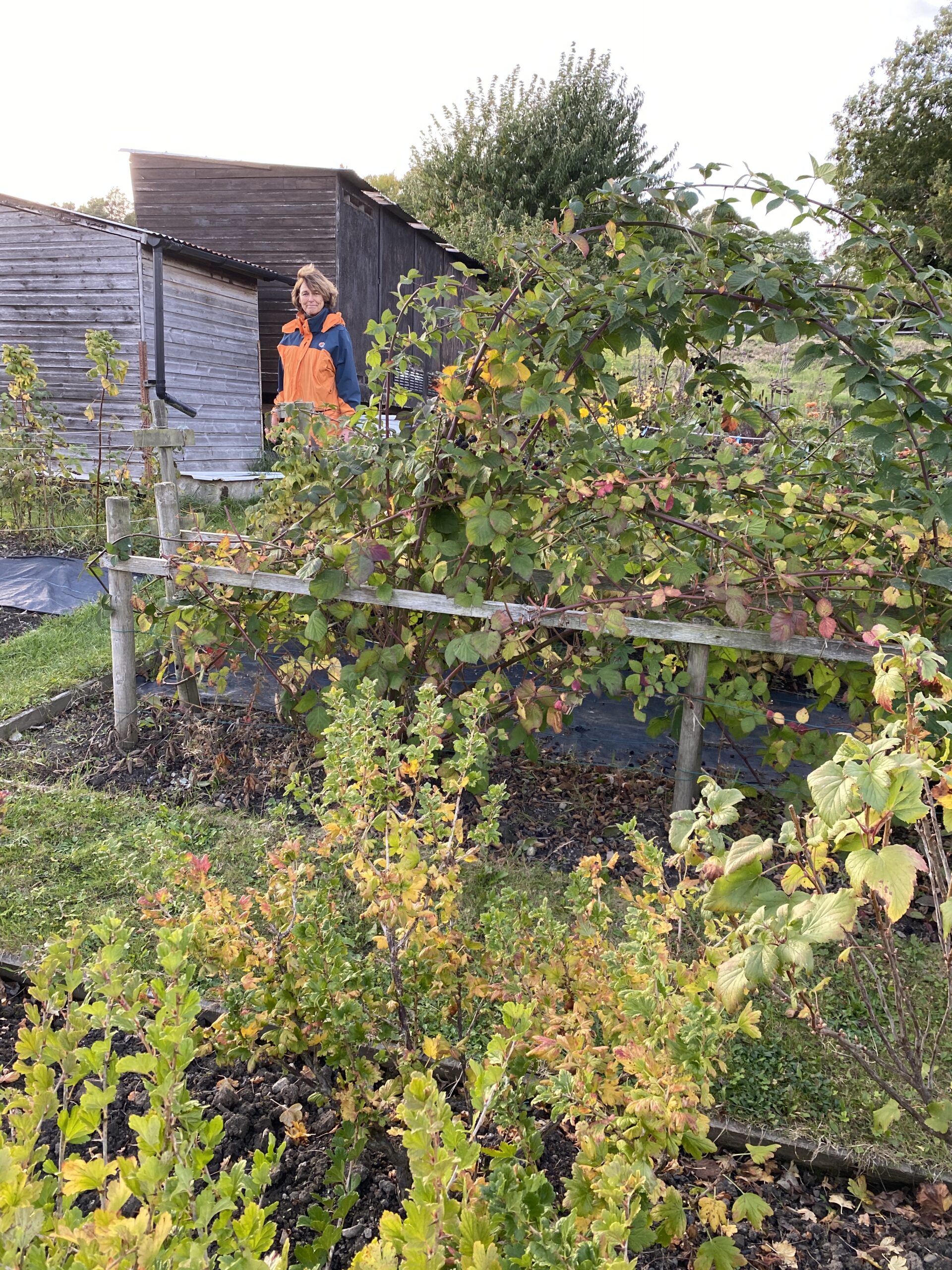
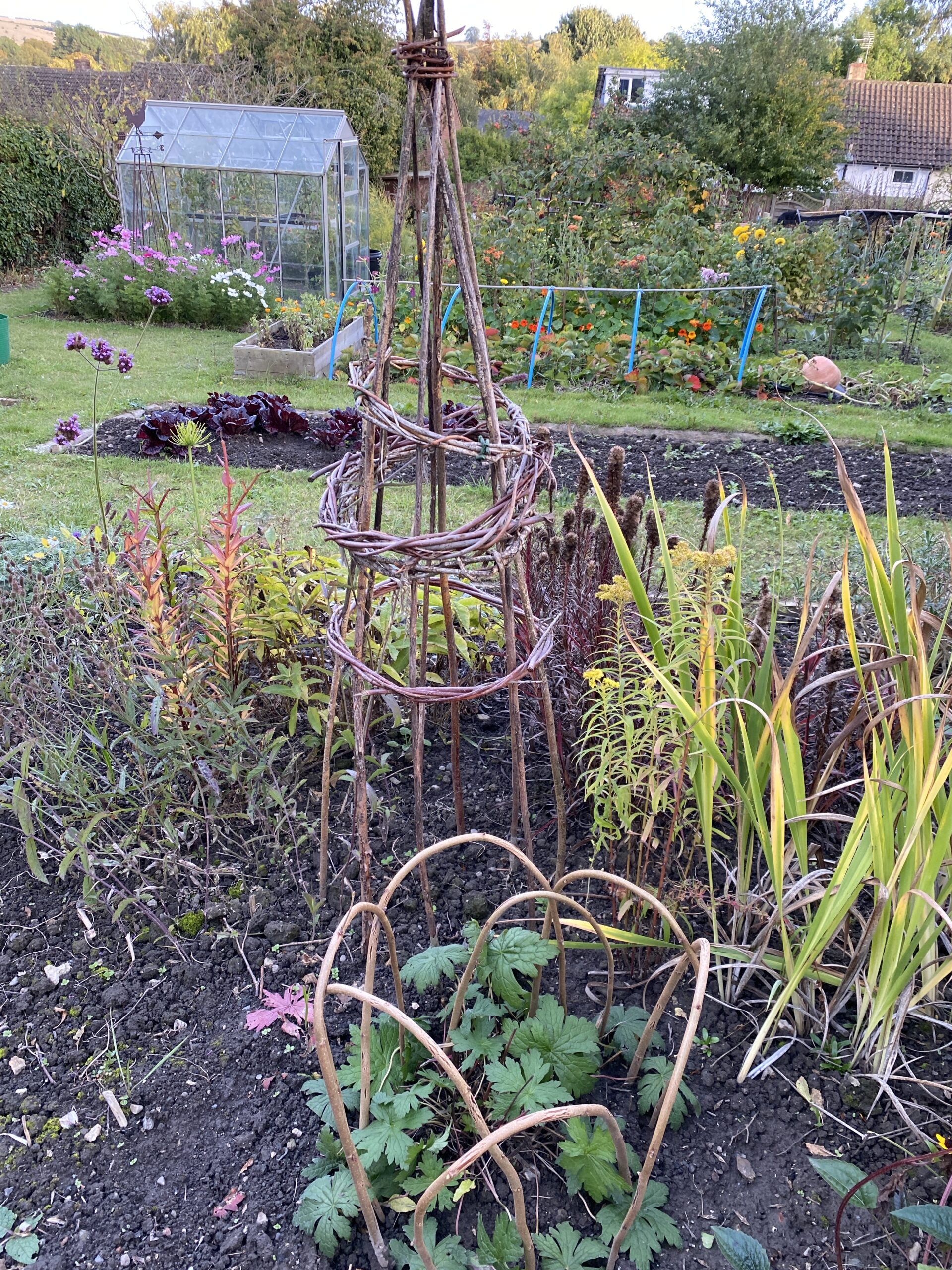
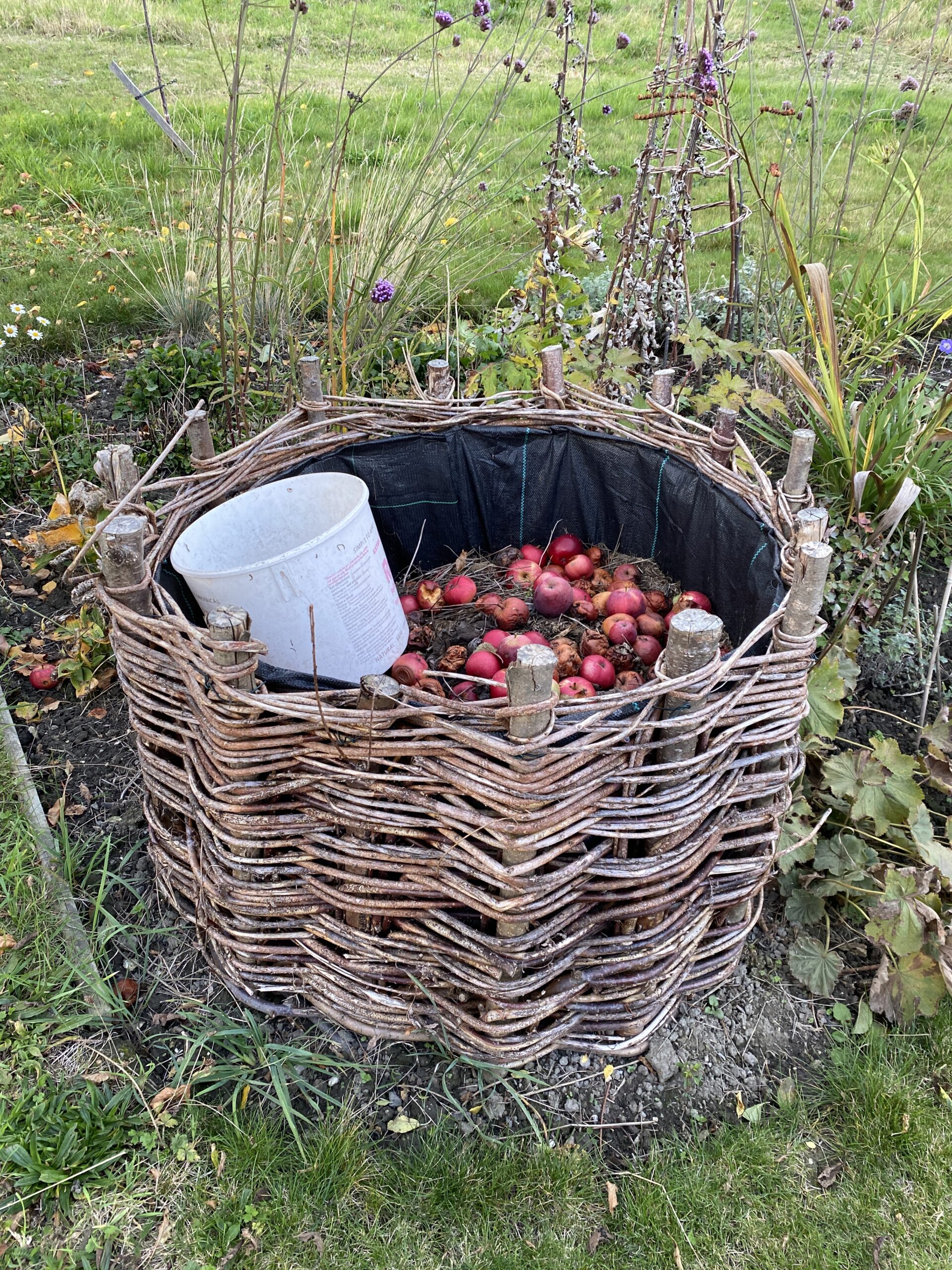
But it is Phoebe’s Allotment Garden that puts her in my fabulous foursome. An allotment garden, not unlike our Community Gardens, is where individuals can garden in their own plot. But this garden is huge (see the picture, top.) We hiked a while to get there, but what a treat! Big raised beds where vegetables would grow, overwintered now, huge baskets woven by Phoebe to hold produce or clippings or whatever needed holding. There were reclaimed structures, repaired, rebuilt and repurposed by Phoebe, as greenhouse or toolshed, compost bins in various stages of breakdown, and apple trees heavy with so much fruit, it couldn’t all be picked. We grabbed handfuls of ripe blackberries on the way out. And yes, a couple of apples too.
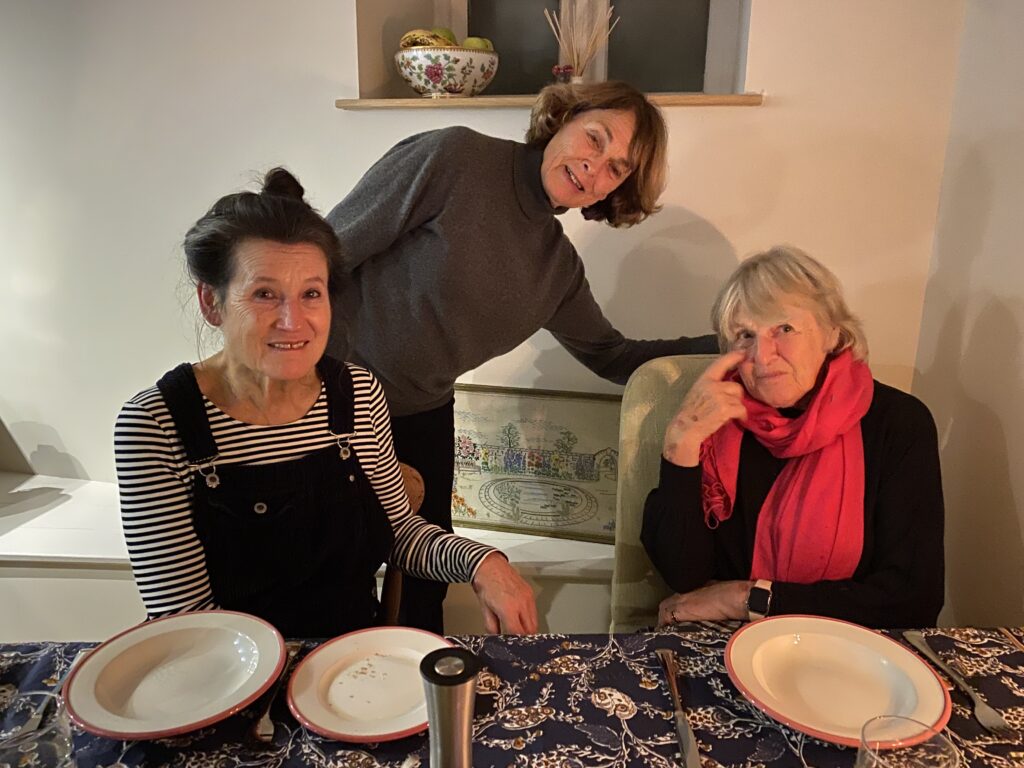
They were delicious.
Meeting these women, even briefly, colored my visit to England in the richest of hues. They added a depth of knowledge, culture, and history to my experience of Shropshire. They welcomed me and shared with me the things that are important to them: legacy, beauty, art, flowers, food, friendship.
I am so grateful.

4 thoughts on “Britain’s Fab Four”
They all sound lovely. I’m so glad you had such a varied and beautiful time.
Thank you. Me, too! I’m grateful I was able to do it.
What an extraordinary experience! Wish I had been along with you!
Next time we’ll do a group!
Comments are closed.